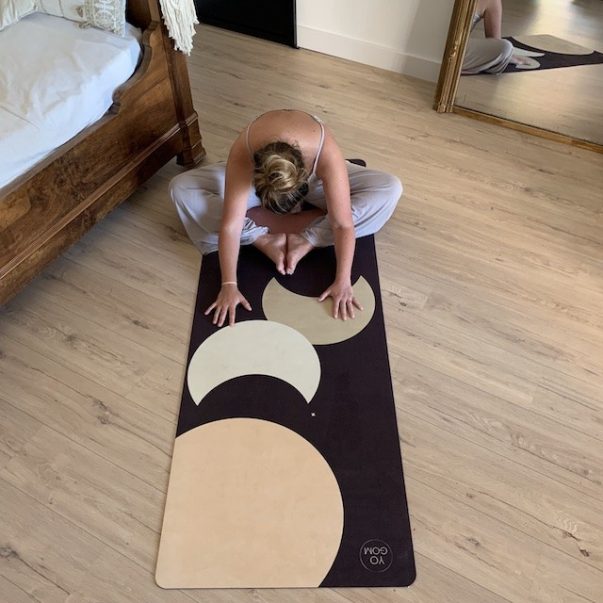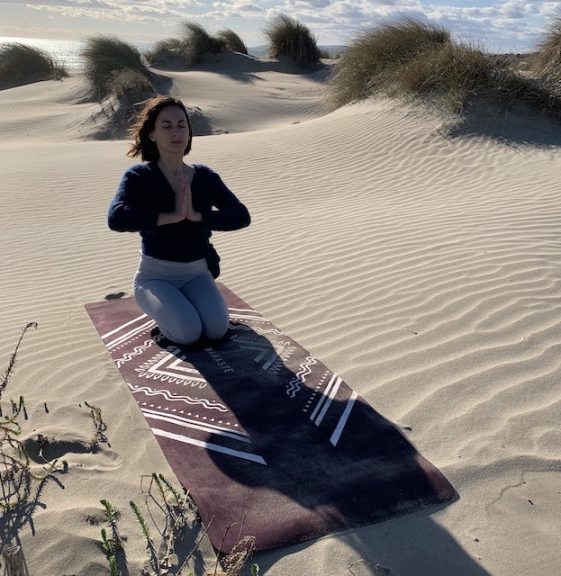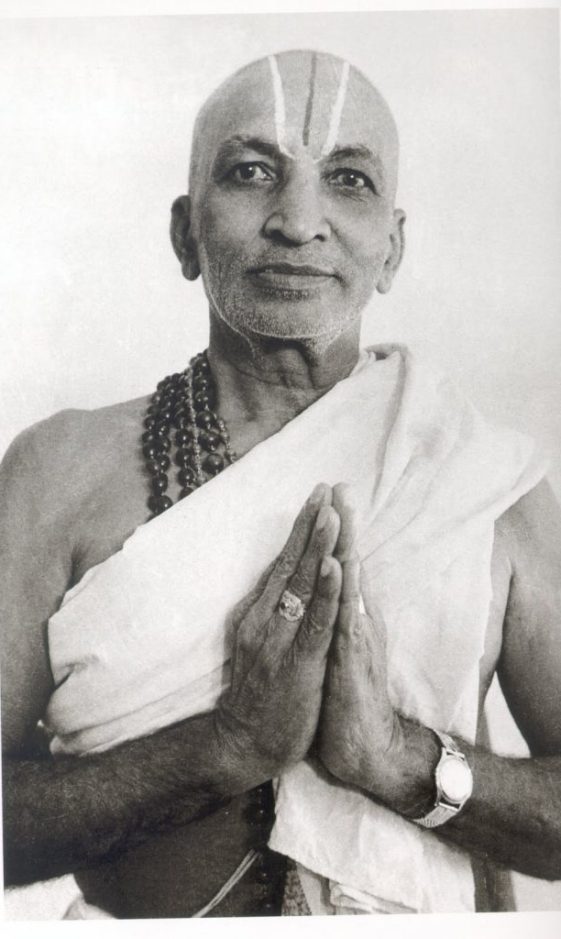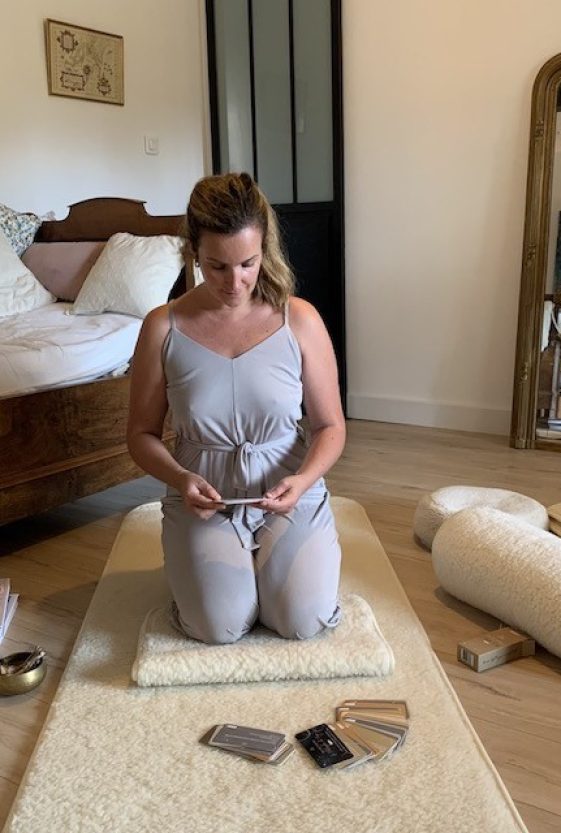
Discover the Viniyogaa pedagogy which proposes a personalized practiceadapted to the specificities of each person. Can’t find a yoga style that really suits you? The problem may not be the discipline you practice but your approach to it!Introduction

INTRODUCTION
Before we begin to trace the history of Viniyoga, here are some interesting facts to know if you have never heard of this “style” of Yoga:
The word Viniyoga belongs to the classical Yoga, it is found in chapter 3, sutra 6 of the book of Yoga-Sutra by Patanjali. It was traditionally associated with meditation, but nowadays it also concerns postures and breathing.
It is not really a style of yoga but more a lineage that has inspired many yoga masters over the years.
Viniyoga is also called “Madras Yoga” after the place where the method was developed or “Desikachar Yoga” after the master who created it.
It brings together all forms of practice but with a particular intention of transmission, as close as possible to the needs of each student.
The French Federation of Viniyoga defines its concept as “a specific pedagogy of Yoga“. So it is not the yoga that is different but the way the teacher transmits and teaches it.
HISTORY OF VINIYOGA
As you can see, Viniyoga is not a style of yoga in its own right, but rather an approach to yoga that can be adapted to each practitioner. But how and where was it created?
It is in India, at the beginning of the 20th century that the master T Krishnamacharya developed this current of thought. At the end of the 19th century, he was teaching yoga in India but the discipline was reserved for an elite, mainly men, and was transmitted in very remote places. Yoga then began to open up during the 1930s. Nevertheless, Krishnamacharya continued to find that the practice and learning of the discipline was still not suitable for everyone, especially women.
He then introduced the idea that yoga should be adapted to each practitioner. This includes physical condition, gender, but also origin and culture which play a key role in the approach and learning of the discipline. He then said this famous quote: “It is not the person who must adapt to yoga, but yoga that must adapt to the person.
Sri T Krishnamacharya had many students, including such well-known students as BKS Iyengar, Sri K Pattabhi Jois andhis son, Sri TKV Desikachar. It is then the latter who will really develop the concept of Viniyoga. Indeed, after having followed his father’s teaching for more than 30 years, Desikachar took over his concept and allowed his values and philosophy to spread all over the world during the 1970s. He then trained a large number of Western teachers, especially from Europe and the United States.
However, it was important to Desikachar that Viniyoga not be considered as a style of yoga or as a school but that it be seen as an approach to the discipline. It includes all forms of Yoga, and is therefore a direction to get all the benefits of its practice. According to him, it is essential to adapt the techniques by listening to the needs of the students but also of the teachers. Viniyoga means “right application of the practice”.

THE ARRIVAL OF VINIYOGA IN THE WEST
Thanks to the teachers trained by Desikachar, who themselves trained new teachers, the philosophy of Viniyoga was able to spread to the West.
One of the teachers who has been essential in sharing these values is Claude Maréchal . Born in Belgium, he discovered yoga at the age of 20, which helped him improve his performance as a top athlete. However, following an injury, his career took off and he became a PE teacher. From 1966, following the advice of a friend, he concentrated on teaching yoga.
He went to India for the first time in 1969 and met TKV Desikachar who spent several years training him. Claude Maréchal regularly spends several months in India to continue his training, which represents a total of 6 years spread over 40 years. He then learnt from Desikachar but also from his father, Krishnamacharya, who personally invited him to develop the principles of Viniyoga in the West.
Claude Maréchal then spent many years training teachers in Europe, not only at the Viniyoga school in France but also in Belgium, Italy, Switzerland, Spain, the Netherlands and Portugal. He also teaches this philosophy in Quebec. Finally, he teaches yogatherapy and is the editor of the magazine Viniyoga which was created in 1983. His influence in Western Yoga is therefore very important.
THE PRINCIPLES OF VINIYOGA
Viniyoga finds its techniques in the traditions and philosophies of yoga whileadapting them to the Western world. According to Desikachar, yoga is far from being a simple sequence of postures for which the work is only physical. The philosophical dimension is equally important, such as meditation, mudras and breathing.
Here are the 3 essential principles of Viniyoga:
The teacher must be a practitioner himself and apply the techniques of yoga with great discipline and accuracy
The teacher must also develop a great capacity for observation
Viniyoga must take into account the particularities and needs of each student
As previously explained, Viniyoga is adapted to each person according to age, physical and psychological state, cultural and religious affiliations, but also to his or her expectations, place of living, professional activities, abilities, etc.
The Viniyoga pedagogy therefore takes into account all aspects of a person and pays great attention to the particularity of his or her needs and potential in order to offer the most adapted and constructive teaching.
On the other hand, Viniyoga is the meeting of an Eastern tradition in a Western context. The fundamental texts are therefore very important but they are adapted to the evolutions and to the contemporary man.
The practice of Viniyoga and its pedagogy take their full meaning during face-to-face meetings between the student and the teacher.

